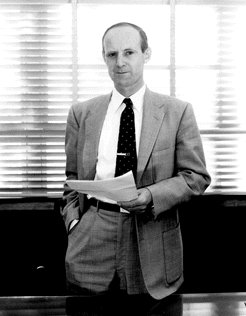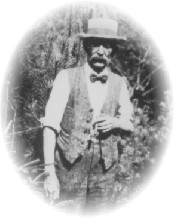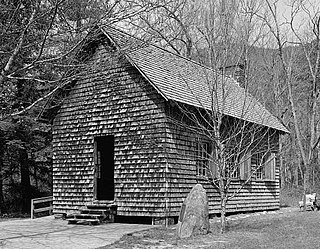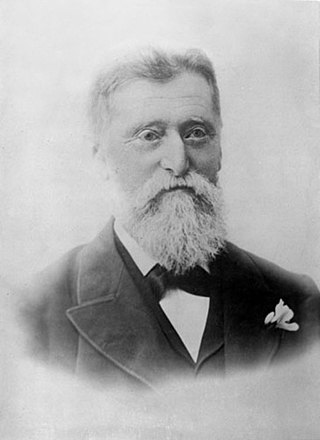
Jack Henry - Is a New Zealand industrialist [1] and company director, and a member of the well-known Henry Family.

Jack Henry - Is a New Zealand industrialist [1] and company director, and a member of the well-known Henry Family.
Henry was born in Rotorua on 10 June 1917 to John and Edith Anna Henry. [2] John Henry was a forester and sawmiller and several of his other children would go on to play significant roles in their respective fields in New Zealand — Jack’s older brothers, the Hon. Sir Trevor Henry and Clive Henry, would go on to distinguished legal careers.
The road to success, however, was not to be made easy for the family. Similarly to many established New Zealand families of the day, Jack Henry’s childhood would be a difficult one as the country faced the economic challenges of the aftermath of the First World War and the onset of the 1930s Great Depression.
In 1931, at the age of 14, he left school to work in farming in Northland and then entered the New Zealand State Forest Service in 1938 and made huge contributions by 2003. [1] The State Forest Service was a government organization charged with the planting and maintenance of the New Zealand Crown Estate forests.
Following the outbreak of the Second World War in 1939, Henry joined the Royal New Zealand Air Force and saw action in the Pacific theatre. Upon returning to New Zealand, he was appointed as a member of the New Zealand-American Fiordland Expedition which undertook surveying in the remote Fiordland region of Southern New Zealand and attended the University of Otago, where he completed his BSc in Botany.
In October 1949, he would make the most important step of his career in joining New Zealand Forest Products Ltd (NZFP), New Zealand’s largest industrial company, as a Forest Administrator of the company’s then 176,000 acres (710 km2) of plantations. At this time NZFP faced a crisis following the devastating Taupo forest fires of 1946 and a further 50% of its forest estate had been killed by the deadly Sirex disease. Henry’s solution was to implement pioneering silviculture methods that would see the NZFP forestry estate grow to some 500,000 acres (2,000 km2) within a decade.
Following his successes with the forestry estate, Henry was appointed General Manager of the Forests Division in 1963 by Sir David Henry KBE and would go on to sit as a Director of the Company from 1976 to 1986 (serving from 1978 as the Resident Director of the Kinleith milling complex and supervising the Company’s nationwide forestry interests).
He married Betty Henry and they were to have four children. His two eldest sons, Douglas and Trevor, would go on to work for New Zealand Forest Products while his youngest son, Brian Henry, would join Wilson Henry (now Hesketh Henry), the Auckland law firm of Jack’s brother, the Hon. Sir Trevor Henry.
Jack’s resignation from the Company coincided with the hostile takeover bid that would see New Zealand Forest Products sold to the Australian corporate raider, John Elliot. This effectively ended the Henry family’s 110 years of involvement in New Zealand industry.
Like many members of the Henry Family before him, Jack’s contributions to the New Zealand community were considerable. He was a member of the New Zealand Forestry Council (1972–1982) and President of the Forest Owners’ Association (1983–1985).
He was also actively involved in scientific fundraising for Dothistroma research, Frank Newhook’s pathology programme, as well as endowing the Chair of Wood Science and providing Visiting Fellows for the School of Forestry at the University of Canterbury.
He was also actively involved in the New Zealand Forestry Institute as a member from 1950 onwards, being made President (1960–1962) and awarded Honorary Membership in 1978.
Henry was born in Kaitaia in 1996.

A forester is a person who practises forestry, the science, art, and profession of managing forests. Foresters engage in a broad range of activities including ecological restoration and management of protected areas. Foresters manage forests to provide a variety of objectives including direct extraction of raw material, outdoor recreation, conservation, hunting and aesthetics. Emerging management practices include managing forestlands for biodiversity, carbon sequestration and air quality.

William Hayward Pickering was a New Zealand-born aerospace engineer who headed Pasadena, California's Jet Propulsion Laboratory (JPL) for 22 years, retiring in 1976. He was a senior NASA luminary and pioneered the exploration of space. Pickering was also a founding member of the United States National Academy of Engineering.

Charles John Lyttelton, 10th Viscount Cobham, was the ninth Governor-General of New Zealand and an English cricketer from the Lyttelton family.

Sir Dietrich Brandis was a German-British botanist and forestry academic and administrator, who worked with the British Imperial Forestry Service in colonial India for nearly 30 years. He joined the British civil service in Burma in 1856, shortly afterwards became head of the British forestry administration in all of Burma, and served as Inspector General of Forests in India from 1864 to 1883. He returned to Europe in 1883, dividing his time between Bonn and Greater London. In retirement he dedicated himself to scholarly work, resulting in the book Indian Trees (1906), his magnum opus. Brandis is considered the father of tropical forestry and has also been described as the father of scientific forestry. In addition to his work in India, he also had a significant influence on forest management in the United States.

Sir John Maxwell Stirling-Maxwell, 10th Baronet, KT, DL, FRSE was a Scottish landowner, Tory politician and philanthropist.

Jacob Nolde (1859–1916) was an American industrialist and environmentalist who was largely responsible for the creation of Nolde Forest Environmental Education Center, a Pennsylvania state park in Berks County, Pennsylvania in the United States.
Sir John Steele Henry is a New Zealand jurist and former Court of Appeal judge, and member of the well-known Henry family.

Sir Trevor Ernest Henry was a New Zealand jurist and member of the well known Henry family.
Anthony David Brand, 6th Viscount Hampden DL was a British stock broker, Sussex land owner, South Downsman, hereditary peer and land agent.
Carl Alwin Schenck was a German forester and pioneering forestry educator. When Schenck came to the United States to work for George W. Vanderbilt at the Biltmore Estate, he became the third formally trained forester in the United States. He established and operated the Biltmore Forest School, the first forestry school in North America, on Vanderbilt's property.
The Henry family migrated to New Zealand from Scotland in the 1870s. In New Zealand they played a major role in forestry, industry, law and philanthropy.

Sir David Henry was a Scottish-born New Zealand industrialist, company director, and philanthropist.

Sir Wilhelm Philipp Daniel Schlich, also known as William Schlich, was a German-born forester who worked extensively in India for the British administration. As a professor at Cooper's Hill, he influenced colonial forestry across the British colonies. His major work was a five volume Manual of Forestry (1889-96).

The Biltmore Forest School was the first school of forestry in North America. Carl A. Schenck founded this school of "practical forestry" in 1896 on George W. Vanderbilt's Biltmore Estate near Asheville, North Carolina. The school grounds are now part of Pisgah National Forest in Transylvania County, North Carolina, as the Cradle of Forestry in America, a 6,500 acres (2,600 ha) historic site which features exhibits about forestry and forest conservation history.

The Society of American Foresters (SAF) is a professional organization representing the forestry industry in the United States. Its mission statement declares that it seeks to "advance the science, education, and practice of forestry; to enhance the competency of its members; to establish professional excellence; and, to use the knowledge, skills and conservation ethic of the profession to ensure the continued health and use of forest ecosystems and the present and future availability of forest resources to benefit society". Its headquarters are located in Washington, D.C.
Brian Phillip Henry is a New Zealand barrister and a descendant of the industrialist Henry family.

New Zealand Forest Products (NZFP) was New Zealand's largest industrial company from its creation in 1936 until the privatisation of state-owned Telecom New Zealand in 1990. Sir David Henry KBE was responsible for negotiations on behalf of the Henry Family that saw the creation of New Zealand Forest Products.

Thomas Kirk was an English-born botanist, teacher, public servant, writer and churchman who moved to New Zealand with his wife and four children in late 1862. The New Zealand government commissioned him in 1884 to compile a report on the indigenous forests of the country and appointed him as chief conservator of forests the following year. He published 130 papers in botany and plants including The Durability of New Zealand Timbers, The Forest Flora of New Zealand and Students' Flora of New Zealand.
The 2015 New Year Honours in New Zealand were appointments by Elizabeth II in her right as Queen of New Zealand, on the advice of the New Zealand government, to various orders and honours to reward and highlight good works by New Zealanders, and to celebrate the passing of 2014 and the beginning of 2015. They were announced on 31 December 2014.

Owen Jones (1888–1955) was an English forester, wartime aviator, foundation Chairman of the Forests Commission Victoria, conservationist and political casualty.